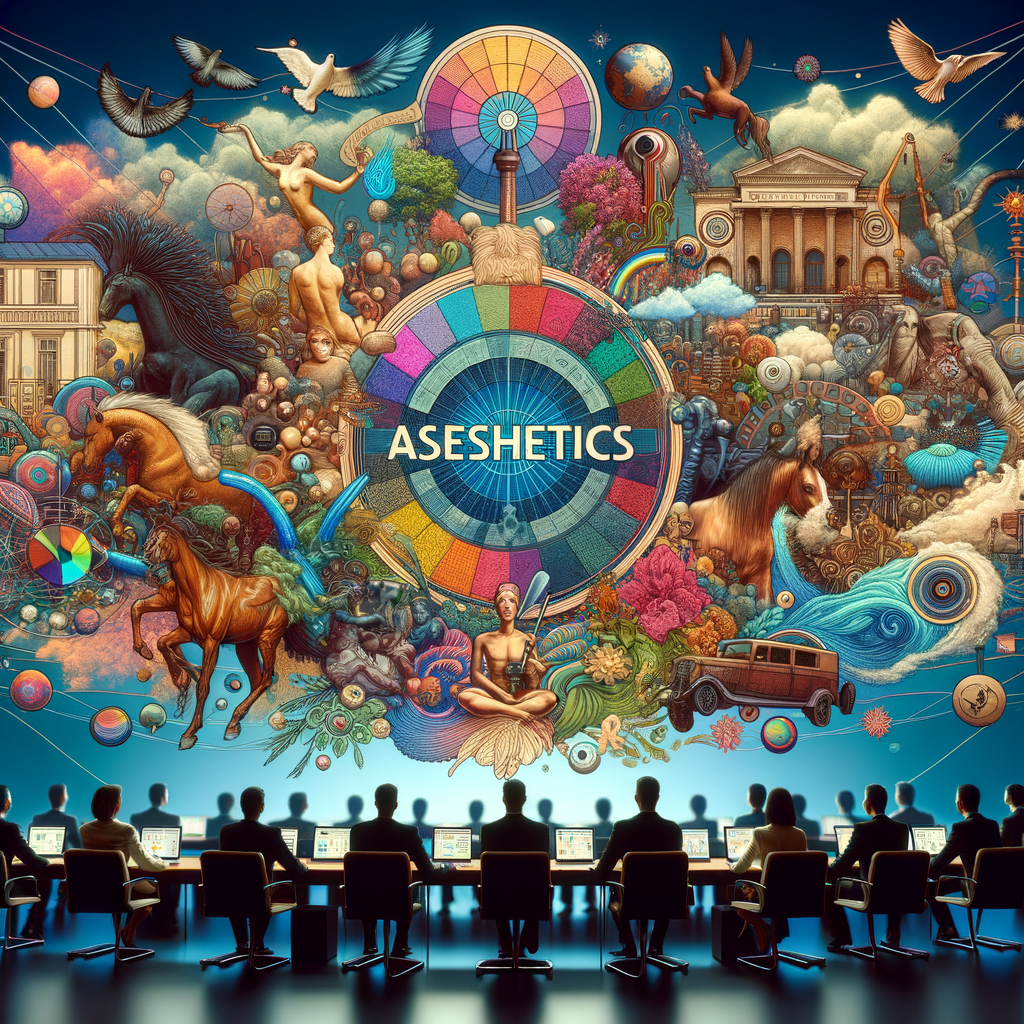The Timeless Charm of American Kitsch: A Journey Through Nostalgia
What is it about retro Americana that tugs at our heartstrings and draws us into a world of nostalgia? The answer may lie in the aesthetic charm of American Kitsch, a visual schema that evokes a unique mood, blending the past with a sense of playful, sentimental affection. From neon-lit diners and vintage advertisements to campy decor and classic cars, American Kitsch has a distinct visual language that tells stories of simpler times with a quirky twist.
Aesthetics Are Collections of Visual Schema That Create a Mood
When we talk about aesthetics, we’re referring to collections of visual elements that come together to evoke specific feelings or moods. Different types of aesthetics can stem from various sources, such as internet communities, national cultures, genres of fiction, holidays, locations, music genres, historical periods, stereotypes, and subcultures. Each aesthetic has its own set of visual cues and motifs that make it recognizable and relatable.American Kitsch: A National Culture Aesthetic
American Kitsch is a brilliant example of an aesthetic that originates from national culture. It combines elements of Americana with a touch of irony and humor, creating a visual language that’s both nostalgic and whimsical. Common motifs include:- **Neon Signs**: Bright, colorful neon signs that once adorned diners, motels, and theaters, adding a retro glow to the streets. – **Vintage Advertisements**: Old-school ads featuring exaggerated claims, bold fonts, and vibrant illustrations.- **Classic Cars**: Iconic automobiles from the ’50s and ’60s, often showcased in pristine condition or as part of nostalgic car shows.- **Campy Decor**: Over-the-top, kitschy home decor items like ceramic figurines, patterned wallpaper, and novelty items.- **Diners and Drive-Ins**: Retro eateries with checkered floors, vinyl booths, and jukeboxes, serving up classic American comfort food.The Origins of American Kitsch
American Kitsch has its roots in the mid-20th century, a time when consumer culture was booming, and the American Dream was at its peak. The aesthetic reflects a period of economic prosperity, technological advancements, and a sense of optimism. However, it also carries an undercurrent of irony and self-awareness, as contemporary audiences recognize the kitschy elements as both charming and slightly absurd.The Visual Language of American Kitsch
American Kitsch relies heavily on recognizable visual tropes that create a specific mood. These include:- **Bold Colors**: Bright, saturated hues that grab attention and evoke a sense of fun and playfulness. – **Exaggerated Motifs**: Over-the-top imagery, such as giant ice cream cones, oversized burgers, and whimsical characters.- **Pop Culture References**: Iconic symbols from mid-20th century pop culture, including movie stars, musicians, and fictional characters.- **Retro Typography**: Vintage fonts and lettering styles that harken back to old advertisements, signage, and packaging.Genres of Fiction with Established Visual Tropes
American Kitsch often intersects with genres of fiction that have their own established visual tropes. For example:- **Film Noir**: Moody, black-and-white films featuring hard-boiled detectives and femme fatales, often set in the same era as American Kitsch.- **Science Fiction**: Retro-futuristic visions of space travel and advanced technology, as imagined in the 1950s and ’60s.- **B-Movie Horror**: Campy, low-budget horror films with exaggerated monsters and over-the-top special effects.Holidays with Iconic Imagery and Colors
American Kitsch also finds its way into holiday celebrations, with specific imagery and colors that evoke a sense of nostalgia. For example:- **Christmas**: Shiny aluminum trees, vintage ornaments, and classic holiday movies that bring back memories of yesteryear.- **Halloween**: Retro costumes, decorations, and old-fashioned trick-or-treating traditions.Music Genres with Consistent Visual Motifs
Certain music genres also contribute to the American Kitsch aesthetic, with visual motifs present in album cover art, music videos, and promotional materials. For instance:- **Rock ‘n’ Roll**: Bold, rebellious imagery associated with early rock stars and their lively performances.- **Doo-Wop**: Harmonizing vocal groups with slicked-back hair and matching outfits, often performing in nostalgic settings like diners and street corners.Periods of History with Distinct Visuals
American Kitsch draws heavily from distinct historical periods, particularly the mid-20th century. This era is characterized by:- **1950s Suburbia**: The idyllic vision of suburban life, complete with white picket fences, well-manicured lawns, and friendly neighbors.- **1960s Pop Culture**: The vibrant, transformative decade that brought us psychedelic art, pop music, and a sense of social change.Stereotypes and Subcultures
While American Kitsch can sometimes play into stereotypes, it also celebrates subcultures that embrace their unique identities. For example:- **Greaser Culture**: The leather-clad, rebellious youth subculture immortalized in movies like “Grease” and “American Graffiti.”- **Pin-Up Girls**: The glamorized, playful image of women from vintage pin-up posters, characterized by their bold poses and vibrant attire.Conclusion
American Kitsch is a delightful journey through nostalgia, blending elements of Americana with a touch of irony and humor. By understanding the visual schema that creates this unique mood, we can appreciate the charm and whimsy that define this aesthetic. Whether you’re drawn to neon signs, vintage advertisements, classic cars, or campy decor, American Kitsch offers a nostalgic escape into a world of playful memories and timeless charm. So next time you find yourself in a retro diner or perusing vintage collectibles, take a moment to savor the kitschy magic that makes Americana so endearing.

Leave a Reply